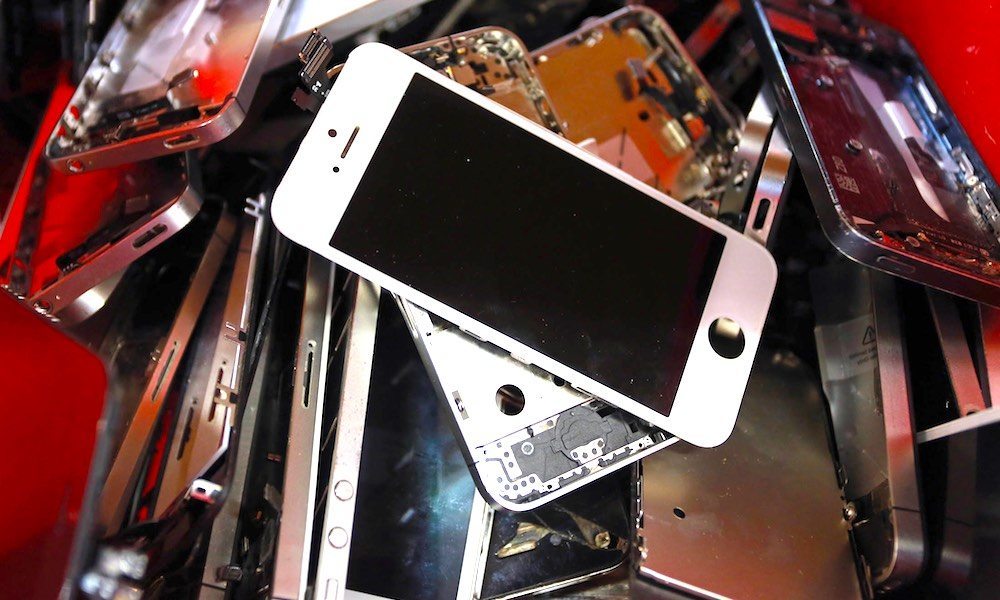Apple Sues Canadian Recycling Firm for Reselling 100,000 Apple Products

Toggle Dark Mode
As part of its commitment to the environment, Apple routinely recycles many of its older products rather than letting them end up in landfills, but what you may not realize is that despite how much Apple likes to laud Daisy the recycling bot, it still relies on many third-party contractors to carry out its recycling business for it.
Most of the time, this presumably works pretty well for everybody involved. Apple ships off thousands of products that are no longer otherwise viable for resale and third-party electronics recyclers take care of disposing of them in a proper and environmentally friendly way.
Except that, in some cases, it seems that at least some of these companies may still see some value in Apple’s castoffs, as the company recently discovered with a Canadian-based recycling firm, where at least some key employees decided to sell off the products rather than recycling them as they were contracted to do.
According to a recent report from The Logic and The Financial Post, Apple is suing one of its electronics recycling providers, GEEP Canada, alleging that it sold and resold nearly 100,000 Apple products that it was supposed to destroy.
11,766 Pounds of Missing Apple Devices
GEEP Canada, an electronics recycling firm based in Barrie, Ontario, about an hour north of Toronto, was hired by Apple in late 2014 to safely destroy and recycle a variety of old Apple products, including iPhones, iPads, and Apple Watches, with the goal of not only ensuring that they didn’t end up in landfills but also extracting certain key materials that could be reused in Apple’s manufacturing process, such as cobalt from batteries.
Between January 2015 and December 2017, Apple shipped 531,966 iPhones, 25,673 iPads and 19,277 Apple Watches to GEEP, according to the suit.
During an audit, Apple discovered that its products were being taken into areas that weren’t actually under video surveillance. This prompted a deeper investigation. After comparing serial numbers of the devices that were supposed to have been destroyed, Apple determined that approximately 18% of the devices it had shipped to the facility were actually being used on carrier networks.
At least 11,766 pounds of Apple devices left GEEP’s premises without being destroyed — a fact that GEEP itself confirmed. These misappropriated devices were then subsequently sold at a significantly higher price than other recycled materials to downstream vendors who refurbished and resold the devices to consumers.
Apple’s lawsuit against GEEP
What’s notable is that Apple’s audit could only look to cellular-capable devices such as iPhones and LTE-equipped iPads and Apple Watches, not to mention that even those devices that have cellular capabilities may still not be connected to cellular service. As a result, it’s a safe bet that the number of stolen devices is likely much higher than the 18% that Apple has been able to confirm.
‘Rogue’ Employees
For its part, GEEP has confirmed that the large quantity of Apple devices that were supposed to have been destroyed were able to be removed from its facilities; however, it’s denying any corporate wrongdoing, pointing instead to three “rogue” employees that acted without the company’s knowledge.
GEEP has filed a third-party claim against the three employees in question, including continuous improvement manager Roger Micks, director of EOL operations Edward Cooper and general manager of training Steven White. According to the claim, the stolen devices were sold to Fu Yuan Yang, the president of Whitby Recycling, in Whitby, Ontario, east of Toronto. The suit goes on to note that Yang and his firm sold them in turn to individuals in China.
In an attempt to conceal their activities, including from GEEP’S management and executives, some or all of Micks, Cooper and White, either directly or indirectly, created and/or manipulated documentation evidencing the supposed destruction of the Stolen Products, even though no such destruction occurred.
GEEP’s claim against former employees
In its lawsuit against GEEP, Apple is looking for $31 million in damages, plus the actual monies made from the sales, contending that by reselling devices that were supposed to be destroyed, GEEP damaged demand for new Apple products, created safety issues for consumers, and hurt its brand reputation by keeping substandard products on the market. GEEP’s suit against the three former employees and the president of Whitby Recycling seeks to have them pay any damages it might owe to Apple should it win its suite, plus its court costs.
While GEEP insists in its own court filings that it only found out about the theft following Apple’s investigation, Apple’s suit alleges that GEEP bears full responsibility, noting that “the scheme was extensive and included members of GEEP’s senior management” and “GEEP’s officers and directors knew or ought to have known about the scheme,” suggesting that even if GEEP wasn’t involved in the scheme, in the very least, it should be held liable for negligence and mismanagement.






